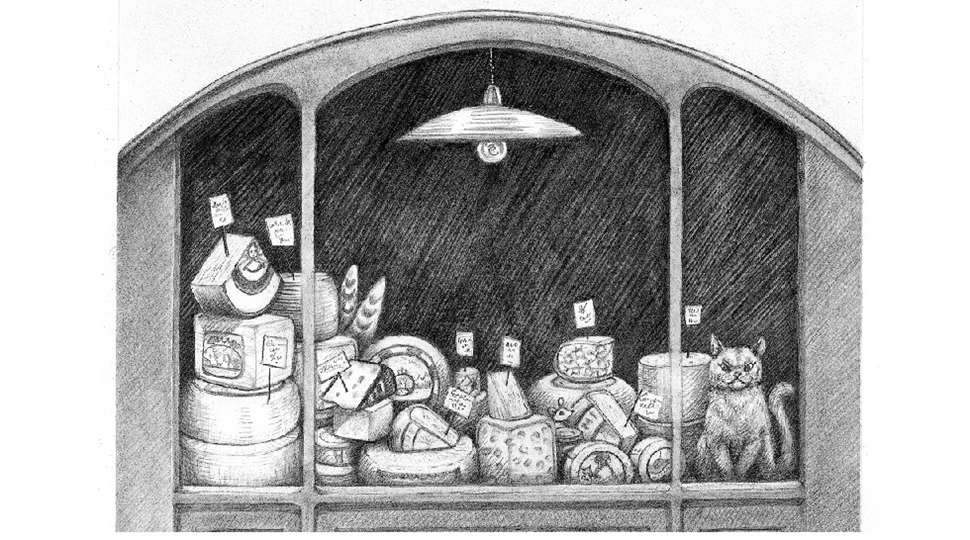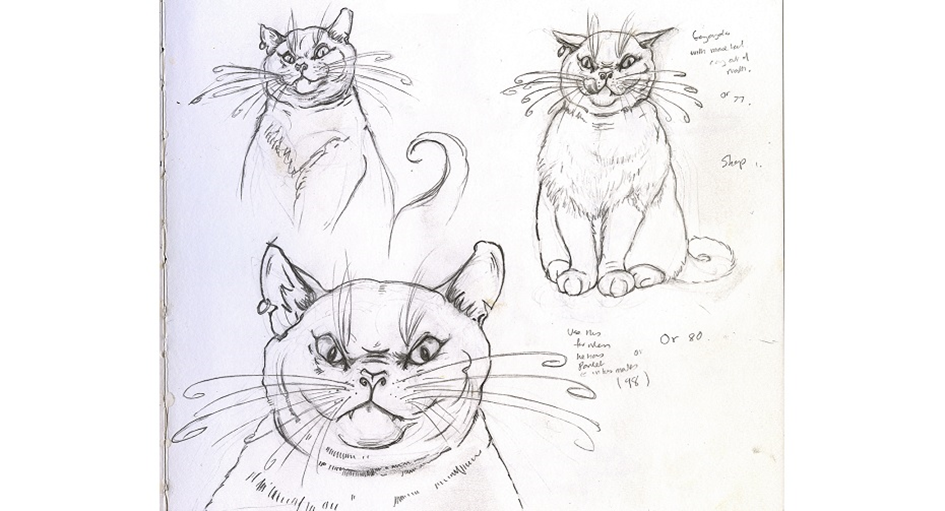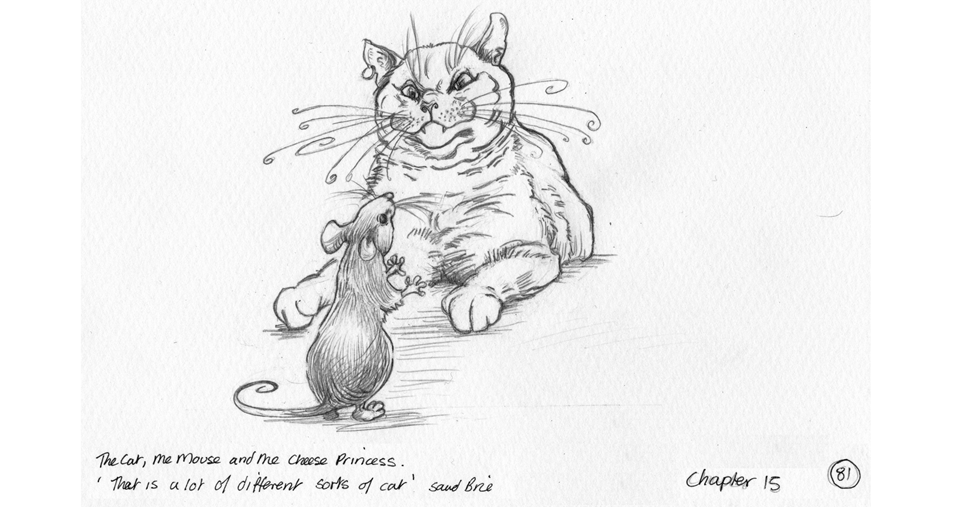Helen Cooper


About Author
Helen Cooper is an author and illustrator whose work includes classic titles such as The Bear Under the Stairs, Pumpkin Soup, The Baby Who Wouldn't Go to Bed and Tatty Ratty. Her books have been translated into 30 languages and won many awards including the Library Association Kate Greenaway Medal - twice.
More recently she has collaborated as a writer with other illustrators. Notably, Saving the Butterfly, illustrated by Gill Smith, was the first of these. She has also written and illustrated children's fiction and the latest - The Taming of the Cat - is out now.
Interview
The Taming of the Cat (Faber Children's Books)
October 2023
Read a Chapter from The Taming of the Cat
The Taming of the Cat is a story about telling stories, as well as a story about a cat, a mouse and a cheese shop. When a mouse, Brie, seeks warmth in the cheese shop, he finds himself in the claws of the fearsome cat, Gorgonzola. To save his life, Brie begins to tell a tale of betrayal, princesses - and a magical cat. In the process, he learns about friendship, belonging and adventure.
Watch Helen Cooper talk about cats, mice - and cheese! in this introduction to The Taming of the Cat (Faber Children's Books):
Q&A with Helen Cooper
"Animal characters are often more humorous... When we smile, we relax. We are more open to points of view a character might express with humour, even when we might not have considered those ideas before."
1. Hello Helen! Please can you tell us a little about yourself - loves and loathings - and what brought you into writing and illustrating books for children?
What do I love? Certainly cats, and cheese, and pumpkins ...and I loathe turnips - eating or carving them - but that was all there was to carve where I grew up in the far, far, rainy, North of England, in a time when there was no internet, and the TV was tiny, and black and white, with only two channels, and even those only worked when the clouds were the right shape.
Both home life and school life were turbulent - in turns dreary or disturbing - so I entertained myself by writing stories, illustrating them and playing the piano. And I never really stopped - except of course to read a book and escape into it - which I did a lot!
I didn't go to university. (Very few did from my school.) Instead, I taught myself from books. I'm still teaching myself everything I do - mainly from books - although the internet is useful too. I don't like to be far from a bookshelf, or bookshop, or library, so nowadays I live in Oxford, which is full of all three, and lots of coffee, and people learning, which makes me feel at home in a way I never have anywhere else.
2. Many of your stories, from Pumpkin Soup to your latest, The Taming of the Cat, involve animals. Is this because you enjoy illustrating them, as well as writing about these characters?
Yes, I usually write what I most like to illustrate: and that is... expressing how my characters feel, and showing that at any given moment they don't all feel the same way. I can often do this better with animal characters. When I draw animals, I can use not only their faces but also exaggerate their whole body to communicate their emotions. And although I can do all that when I draw humans too, human expressions are more subtle and harder to read.
Animal characters are often more humorous. They can be ridiculous yet appealing at the same time. They charm us. And when we smile, we relax. We are more open to points of view a character might express with humour, even when we might not have considered those ideas before. And animal characters are more universal. No one feels unrepresented if the hero of the book is a mouse. Animal characters can be more inclusive, yet conversely, we have a bit of distance too. This distance means I can explore a scary situation without frightening my younger readers more than they would like. After all - they are not likely to be eaten by a cat.
I use metaphor a lot in my stories. By that I mean an animal character usually represents something else. (E.g: in 'Saving the Butterfly' the appearance of the butterfly is a pivotal part of the plot, but the butterfly also represents hope, and the fragility and strength of the human spirit.) So, although I often have people in my stories, animal characters can sometimes be more useful to express my ideas to children. In fact, this is a device that writers have used for readers of all ages, from Aesop's Fables to George Orwell's Animal Farm.

"I once went into a cheese shop, with a fierce looking cat sitting in the window. And as I queued I thought of a story: the tale of a mouse trapped by a cheese shop cat"
3. What happens in your new book, The Taming of the Cat?
Brie the mouse is a storyteller, caught in the paws of Gorgonzola, the murderous cheese shop cat. If Brie can amuse her, she might not eat him - yet. But as he weaves his magical tale of a fierce princess, and an enchanted hill, with a dragon and a giant cat, he gradually realises the truth. He can trust Gorgonzola more than the community of mice that he lives with. But can anyone really tame a cat?
4. What inspired the story about a mouse taming a cat - and an awful lot of cheese?
I once went into a cheese shop, with a fierce looking cat sitting in the window. And as I queued I thought of a story: the tale of a mouse trapped by a cheese shop cat, a mouse who tells stories to keep from having his head bitten off. A bit like Scheherazade, in The Arabian Nights - she has to tell stories to stay alive too - but my version would be with cats and mice.
5. How did your characters develop - and why are they all named after cheeses?
I never begin the illustrations before the text is finished, but I often develop the characters in my sketch book. Strangely, as I draw them in different positions, I begin to understand them better. It's as if they become more rounded in my mind as I draw.
As for their names - well, as these animals all live in a cheese shop I thought they should all be named after cheeses because that is what they know. Besides, cheeses have fantastic names.

"I never begin the illustrations before the text is finished, but I often develop the characters in my sketch book. Strangely, as I draw them in different positions, I begin to understand them better."
6. How do you plan your stories - especially as, for this tale, you needed to weave two stories - about what is happening in the shop, and what is happening in the story Brie tells - together?
I didn't exactly plan. Little snatches of words or images came to me, and I wrote and rewrote, drew and redrew, until the stories felt in equilibrium. That is how I always work. And after nearly 30 years as an author, it is still slightly mysterious to me. I just know that when a story is going as I want it feels like a piece of music with the instruments all balancing each other sympathetically. Maybe one day I'll find the masterplan. That would be good, as I am rather slow.
7. What was it like to tell a story through one of your characters, as you do with Brie?
It's a writer's job to inhabit all our characters while we are writing about them. But in most cases, we aren't our characters, or even much like them whether they are human or not. Mostly we do research, then use our imaginations to fill in the gaps. In my case I also spoke to a friend who happens to be a cat. (Warning: Never totally trust the words of a writer of fiction - we are excellent at making things up.)
Here is a bit of my research: did you know that both cats and mice use their whiskers for location? They can use their whiskers to feel where the walls are in the blackest night; they can feel the vibrations in the air made by something moving nearby. My cat and my mouse are appalled at the thought of the poor princess who has no whiskers at all! No wonder humans bump into walls in strange dark places.
8. Other than a great - well, two great - stories about a mouse and a cat, what would you like young readers to take from The Taming of the Cat? As an author, do you want to bring big themes of how we treat each other into your stories for younger readers?
Books can help children express their own feelings, so yes: I tend to write stories driven by strong emotions that children might like to talk about afterwards. Pumpkin Soup, probably my most well known book, certainly dwells on themes of sharing and how we treat one another. The Taming of the Cat is longer, so I had more words to play with, more opportunity to explore themes of bullying, prejudice, and being true to yourself.
But all that is secondary to the shape of the story. For The Taming of the Cat, I chose to write in a fairy story tradition, but with unusual alliances and unexpected twists that lead to an unorthodox ending. It's told by a mouse about princess who has no intention of ever marrying a prince. And she doesn't. She goes on an adventure instead with a magic cat, on a quest for flower that smells exactly like catnip only even more delicious - if you're a cat.
Remember my mouse has to make his story exciting enough to keep a cat entranced and as the writer I need to keep my readers turning the pages too. That's the single most important part of a good children's book - an enthralling story.

"Brie the mouse is a storyteller, caught in the paws of Gorgonzola, the murderous cheese shop cat. If Brie can amuse her, she might not eat him - yet."
9. Where do you prefer to write and illustrate your stories - and what keeps you at your desk?
Lots of coffee - and I find heavy chains or super glue on my desk chair works quite well. I never exactly want to work when it's time to work...yet I can't not work either.
Of course the other thing that keeps me at my desk is that writing and illustrating is my job. I do it to earn money so I can pay my bills. And a writer's job is not all creative. We need to promote our books and run our business. I find that much less interesting and would stop all that in a minute if I could. But my creative work is a compulsion. I can't help doing it and will always do it in some way. I like it close by, even when I'm avoiding it.
10. How much cheese was actually eaten in the writing of this book?
I have done some rough calculation. Writing and illustrating and working with the editors and the designer of this book took more than three years. And I often can't be bothered to cook, so then I eat cheese instead - I sometimes eat two big chunks in a week. So, considering a brick wall takes about 60 bricks to a square meter I'd say I probably ate a low brick wall of cheese while I worked on the book
And where are you most likely to be found on a day away from your desk? If I'm not working and not doing jobs that have to be done, I might be playing my piano, or reading...although I can say I'm reading for research...which is often true.
Usually I walk every day; mostly in Oxford where there are lots of parks and gardens and museums and coffee shops. Do I miss the hills of the north? No not really. Although the contours of the hills and valleys I grew up in often appear in my illustrations. However, FoxHill, in The Taming of the Cat, is also inspired by a famous hill topped by trees near Oxford called the Wittenham Clumps, which has captivated lots of artists - most famously Paul Nash.
 The Taming of the Cat
The Taming of the Cat
